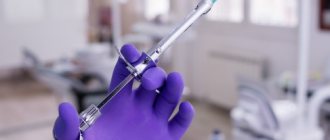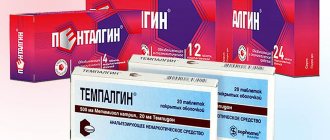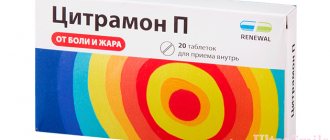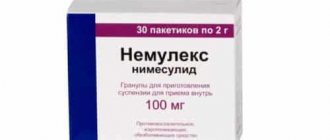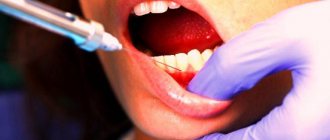Effect of the drug
Paracetamol has been considered a popular and sought after pain reliever and antipyretic for half a century. Efficiency is associated with uniform distribution across tissues.
The active ingredients block the action of prostaglandins, which are sources of pain. This eliminates moderate pain. The drug also copes well with fever. This serious symptom can indicate a variety of infectious and inflammatory diseases.
Before taking it, you should consult your doctor and read the instructions to prevent side effects. You should strictly follow the dosage, otherwise complications related to the functioning of the heart and kidneys may occur. The risk increases when taken concomitantly with alcoholic beverages.
Signs of poisoning do not appear immediately. Initially, your general well-being may only slightly deteriorate.
Contraindications and side effects
Often people taking paracetamol or drugs containing it experience pain in the liver. This medicine can negatively affect this organ and sometimes even cause death when taken in large dosages. There are cases where taking paracetamol without any medical supervision led to exacerbations of liver pathologies.
Patients taking medication without receiving a doctor's prescription should be aware of the risk of complications. It is necessary to carefully choose the dose, avoiding overdose. If you have liver diseases such as cirrhosis and hepatitis, taking the drug is strictly prohibited.
People with bronchial asthma can take paracetamol only after consulting a doctor
Caution should be exercised by people with bronchial asthma. They should also avoid using paracetamol unless advised by a doctor as it increases the likelihood of bronchospasm. It can develop in patients who are hypersensitive to aspirin and other non-steroidal drugs.
You should be aware that large amounts of medication taken over a long period of time can negatively affect the metabolic system, suppressing the functioning of the thyroid gland.
There is no information on the effects of paracetamol on the kidneys, but consultation with doctors is a good idea as some patients have developed kidney failure when the dose is increased. People who abuse alcohol are also at risk.
People suffering from serious heart, kidney, respiratory and liver diseases should exercise caution when using the drug. An overdose of paracetamol primarily affects the liver. As a result, everything can lead to organ necrosis, which can be fatal.
Despite the fact that particularly careful attention is required to select a safe dose, even a relatively small amount of medication can lead to complications.
In what cases is it effective?
The drug has an effect in various febrile conditions associated with elevated temperature. Particularly effective for colds.
Paracetamol is able to cope with pain of varying intensity. It is often used for headaches and toothaches. Helps women with pain during menstruation.
The drug is allowed to be taken by pregnant women and babies from 3 months. For children there are baby candles and syrup. The product is often given to babies who are starting to cut their teeth.
The order of appearance of baby teeth
The appearance of teeth has a strict sequence, which indicates the correct formation of the masticatory apparatus:
- At the age of 9-10 months, the first lower and upper incisors appear.
- Up to a year (up to 12 months), the second upper and lower incisors erupt.
- The first upper and lower chewing teeth will appear at the age of 12-19 months.
- Fangs erupt between 16 and 22 months of age.
- The child will acquire second upper and lower chewing teeth between 20 and 30 months.
In general, the process of teething is the natural course of things. And it’s definitely not worth accelerating it with mechanical influences. But it is possible to help a child survive it with the least discomfort. The first symptoms of teething may appear a month or two before the actual appearance of the tooth! To prevent a child from feeling discomfort all the time, there are many everyday tricks and even medications designed to relieve pain and inflammation from children’s gums.
“Painkillers” for teething in children: types, methods of use
To facilitate the process of teething, you can use various painkillers, local and general. What types of means are there and are there any restrictions on their use?
To make the process of teething as easy as possible, dentists recommend massaging the child’s gums. The gums are massaged for 1-2 minutes with gentle circular movements with clean hands, while the fingers are wrapped in a sterile napkin. In this case, Asepta napkins, made in the form of a fingertip, have proven themselves to be excellent. Extracts of chamomile and witch hazel in the impregnation have a soothing and anti-inflammatory effect on inflamed gums, reducing pain and swelling.
In addition, it is important to constantly wipe your baby's drool if it drips onto the chin to avoid irritation or rash there. Teething is accompanied by copious salivation; during this period the child must be carefully monitored.
It is necessary to constantly maintain contact with the baby, take him in your arms often and try to distract him with some activities. It is recommended to talk a lot with the child in order to “drown out” his pain.
During teething, you can offer your baby special teethers - toys of various ring-shaped shapes rubberized or filled with cooling thermogel. Before giving such a thing to your child, experts recommend cooling it a little in the refrigerator. But not too much, since the child will refuse very cold toys, and if he does not refuse, he may catch a cold due to contact with a surface with a low temperature.
If the baby refuses special devices for teething and prefers to chew something chosen independently, there is no need to prevent this. However, it should be borne in mind that the object that the child puts into his mouth must be:
- is devoid of sharp protruding parts so that the baby does not cut himself;
- without small parts that a child can “gnaw off” and swallow/chokes on;
- consist of a substance that will not harm the child upon contact.
Many children love to chew on bread crusts or bagels while teething. This is a rather dangerous activity, since the child may choke on crumbs or damage the delicate oral cavity with them.
Paracetamol for fever
Paracetamol can be used at a temperature if it has reached 38.5 degrees or higher. This is explained by the fact that elevated temperature has a negative effect on harmful microorganisms, and, therefore, allows you to recover faster.
It should be taken strictly according to the instructions, without exceeding the dosage. The tablet should be taken with a sufficient amount of drinking water, which will speed up the absorption of the active ingredient and minimize the negative impact on the liver.
Single dose 400-500 mg. If the temperature reaches 40 degrees, the dose can be doubled.
For children and adults, a single dose is determined based on weight. A child can take the drug 4 times per day. Duration of treatment – up to 3 days.
How to take for headaches
The medicine is quite effective for headaches. But when taking it, it is worth considering some features. The tablets should not be taken on an empty stomach. Before taking the pill, you need to have at least something to eat. If there is no appetite, then you can drink a glass of water.
You need to take the tablet with plain water. It is not recommended to use coffee and tea, as the effect may be reduced to zero. If unbearable pain is felt, then you can take 1000 mg of the drug at a time. You can take the medicine again after at least 4 hours. You can take no more than 4 tablets per day. This regimen does not apply to pregnant women (the dosage should be 2 times less).
Paracetamol is prescribed for migraines, which are characterized by persistent, throbbing pain, usually in one part of the head.
If the headache is associated with stress or a nervous condition, then 1 tablet is enough.
When is it used?
At the moment, the pharmacological industry produces quite a lot of medicines based on paracetamol. Among them, the most famous are “Panadol” and “Efferalgan”.
Paracetamol has long been known as an antipyretic and analgesic.
This medicine has two beneficial properties at the same time:
- Antipyretic
- Painkiller – relieves toothache, migraine, headache, pain arising from burns and injuries
Paracetamol for colds
When a cold appears, you need to provide timely help. Otherwise, the condition may worsen. The first signs of the disease are excessive weakness and fatigue. During ARVI, a runny nose, cough, fever, muscle and joint pain appear.
Paracetamol will reduce the symptoms of the disease and improve the patient's condition.
Very often the drug is prescribed to adults and children over 12 years of age in tablet form. If the medicine is to be taken by children, then it is worth considering an important factor - the child must weigh more than 49 kg.
Babies up to one year old can be given the drug in the form of a suspension, after a year - in the form of syrup.
In many cases, adults take 1 tablet 4 times a day. Duration of treatment – no more than 3 days.
How to take for toothache
Often toothache catches a person at the most inopportune moment. Not in all cases it is possible to go to the dentist right away. To eliminate unbearable pain and improve the condition, you can take Paracetamol.
The drug is able to stop the production of prostaglandins, which are the source of pain. The tooth stops hurting, but the inflammatory process continues to spread. If the toothache does not go away, then you should not hesitate to go to the dentist.
You need to take the medicine after meals. Relief is observed after about 15-20 minutes. You can take the pill again no earlier than after 4 hours. You can take 4 tablets per day. Paracetamol can be taken for no more than 3 days.
Indications for use of the drug
Paracetamol has several indications for use:
- the appearance of fever, body aches caused by colds
- pain of various types, but not those caused by inflammatory processes.
Doctors also recommend giving it as a prophylactic after the vaccine is administered.
Features of use by pregnant women
Pregnant women often complain of toothache. Most often, the cause is caries, which appears due to the fact that calcium in a woman’s body is directed to a greater extent towards the structure of the bone tissue of the unborn baby. This causes various problems, particularly with teeth.
Paracetamol is allowed to be taken by pregnant women, but precautions should be taken. The active substance can penetrate the placenta. The minimum dose of the medicine can be taken in the 2nd trimester, when the child’s organs are already formed.
Before taking it, you should consult your doctor. You can drink no more than 1 tablet per day. Repeated use may cause harm to the fetus.

